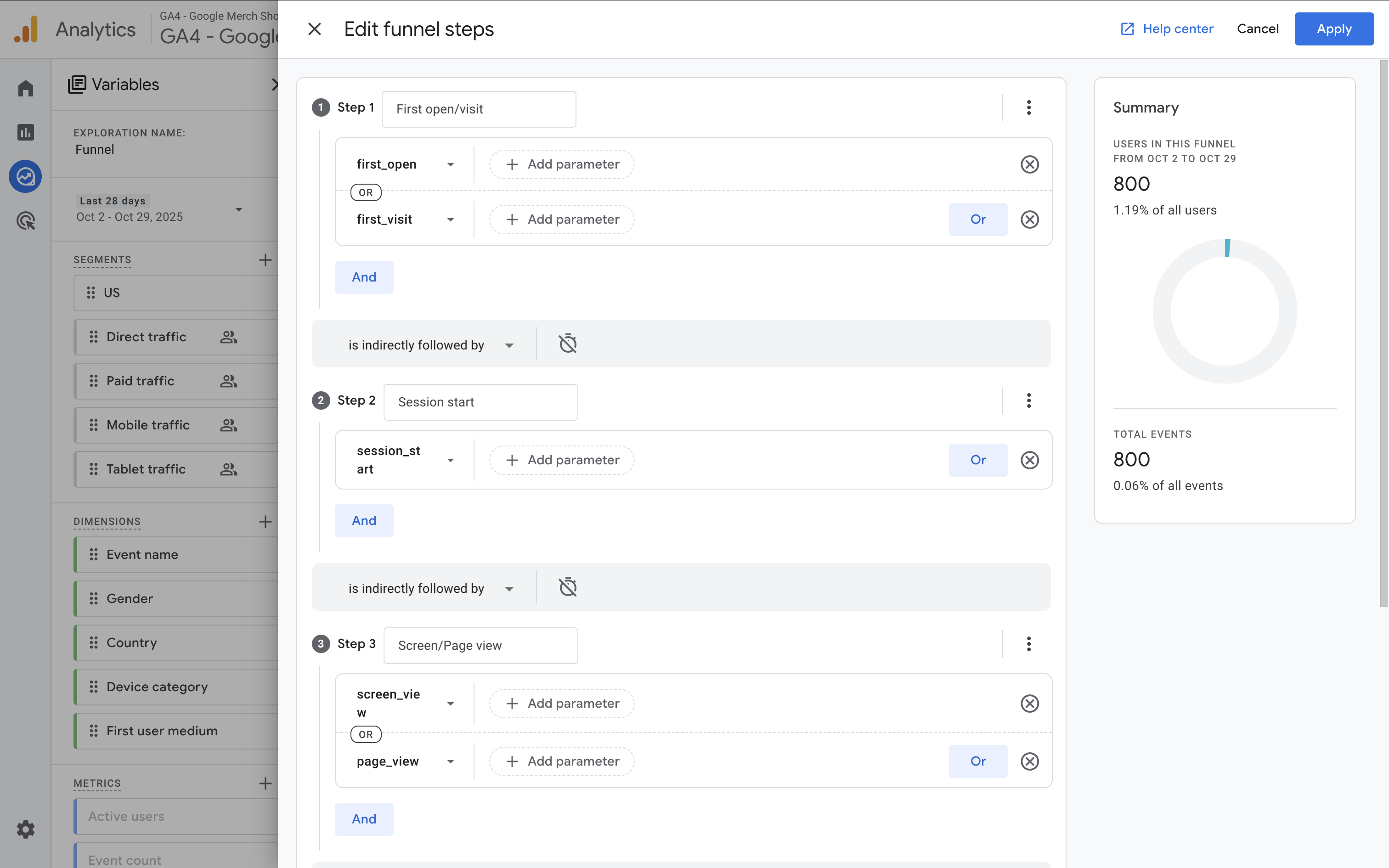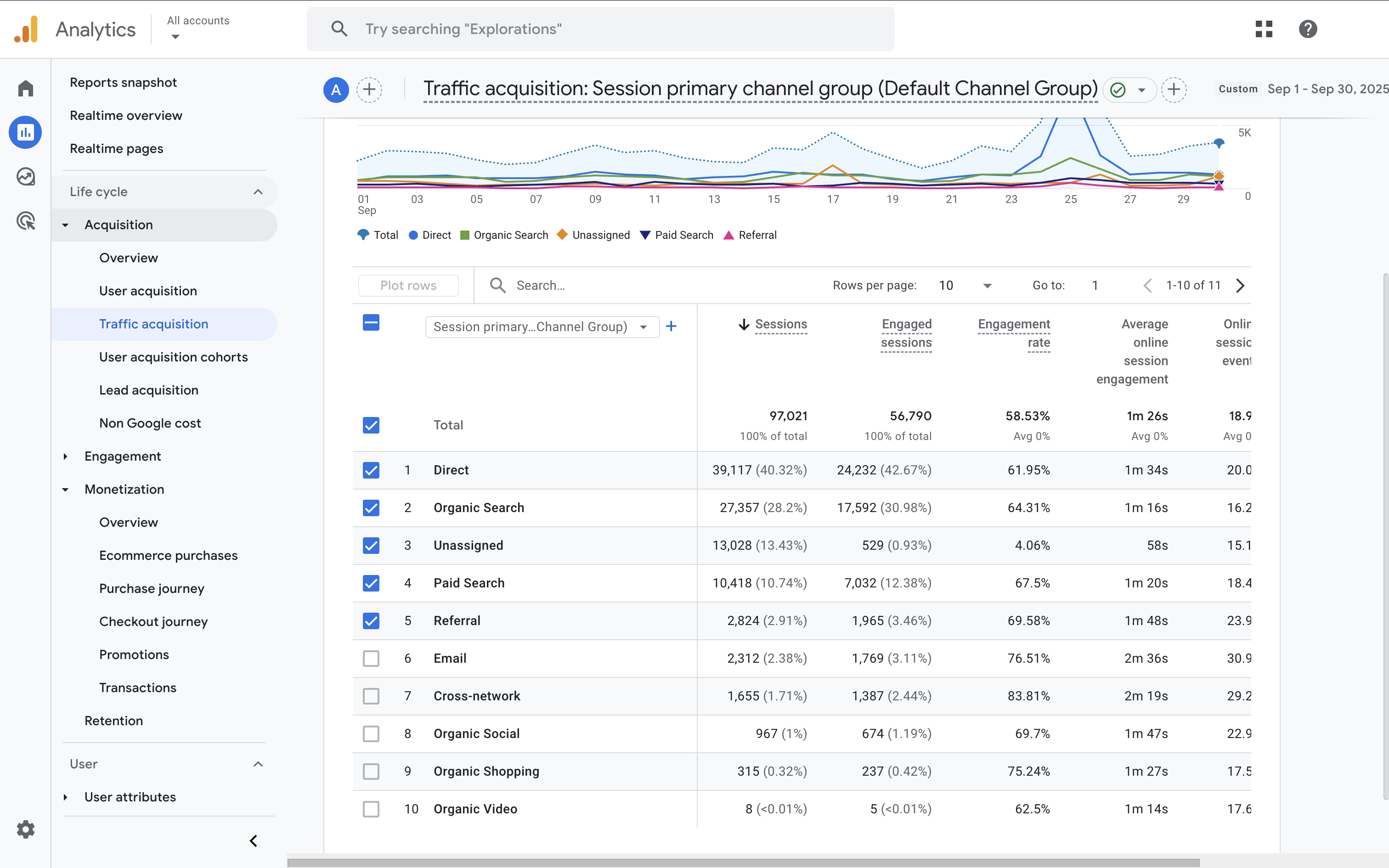Using Google Analytics 4 to Monitor Website Performance
To get the most from your website, you need to understand how it is performing, and that is where Google Analytics 4 (GA4) comes in. GA4 gives you detailed insights into your visitors’ behavior, traffic sources, and engagement, helping you identify what is working and what needs improvement.
Monitoring key metrics helps you evaluate your content and user experience. You can see which pages keep people engaged and which might need attention. Tracking this data also helps you identify trends, like what drives users to take action or where they drop off, so you can make informed changes that deliver results.
Once you have set up GA4, you will have access to real-time and historical data to guide your decisions. This allows you to refine your strategies, measure success over time, and create a better experience for your visitors.
Understanding Google Analytics 4 Metrics
GA4 uses a different measurement model than Universal Analytics, focusing on events and users. Understanding the core metrics will help you interpret your website’s performance more effectively.
- Users: Shows the number of unique people who visit your website. GA4 also distinguishes between new and returning users, which helps you understand whether you are attracting new visitors or building loyalty with existing ones.
- Sessions: A session represents a user’s visit to your website. In GA4, sessions are based on an event model, meaning they start when someone visits and end after 30 minutes of inactivity. Tracking sessions helps you understand when your site gets the most engagement.
- Engagement Rate: This replaces the old bounce rate metric from Universal Analytics. It measures the percentage of sessions where users actively engage with your site, for example, by scrolling, clicking links, or viewing multiple pages. A higher engagement rate generally means your content is resonating with your audience.
- Key Events: Used to track conversion actions, such as purchases, form submissions, and sign-ups. In GA4, you can mark any event as a key event, giving you more flexibility in defining what matters most for your business.
Reviewing these metrics regularly helps you stay in tune with how people interact with your website, so you can focus your improvements where they will have the most impact.
Setting Up Conversions and Funnels
Conversions and funnels in GA4 let you see how visitors progress toward completing a goal and where they might drop off along the way.
Here is how to set up conversions and funnels in GA4:
- Define your conversions: Start by deciding which actions represent success for your website, for example, a completed purchase or a submitted contact form.
- Mark events as key events: In GA4, navigate to 'Admin' and select 'Events'. Find the event you want to track and toggle it on as a key event.
- Create a funnel exploration: Go to 'Explore' and choose 'Funnel Exploration'. Add each step of the journey, for example, Product Page, Add to Cart, Checkout, and Purchase.
- Analyze drop-offs: Use the funnel visualization to see where users leave before converting. This helps identify friction points that could be improved.
By tracking conversions and analyzing your funnels, you will have a clear picture of how people move through your website and what might be standing in the way of your goals.

Using Google Analytics 4 Reports
GA4 includes a number of powerful reports to help you understand your audience and optimize performance.
- Acquisition Reports: Show how people find your website. You can compare traffic sources like organic search, paid ads, social media, and referrals. Look under 'Reports', then 'Acquisition', and 'Traffic Acquisition' to identify which channels drive the most engaged visitors.
- Engagement Reports: Help you understand what people do on your site. You can see which pages or screens are viewed most often, how long people stay, and which events they trigger. These insights can help you refine your content strategy.
- Monetization Reports: If you run an online store or track ecommerce actions, this section shows purchases, revenue, and product performance. Use this data to understand which products or campaigns are performing best.
- Retention and Demographics: These reports help you see who your users are and how often they return. Understanding user demographics and loyalty helps you tailor experiences for different segments.
By regularly reviewing these reports, you will uncover patterns and opportunities to improve both user experience and business performance.

Best Practices for Continuous Improvement
Improving your website is an ongoing process, and GA4 gives you the data you need to do it effectively. Here are a few best practices to keep your site performing at its best:
- Review your data regularly: Check your key reports weekly or monthly to spot new trends and issues early.
- Benchmark performance: Use your past data to set realistic goals for improvement. For example, aim to increase your engagement rate or conversion rate by a specific percentage.
- Experiment and test: Try new content, layouts, or call-to-action placements. You can track the results in GA4 to see what performs best.
- Prioritize user experience: A fast-loading, easy-to-navigate website keeps visitors engaged. Use your engagement and funnel data to guide improvements.
The more consistently you analyze and act on your GA4 data, the more effectively you will improve your site over time.
Conclusion
Google Analytics 4 is an essential tool for understanding how your website performs and how users interact with it. By tracking engagement, key events, and user journeys, you can make smarter, data-driven decisions that improve your website’s effectiveness.
When used consistently, GA4 helps you move beyond guesswork and focus on what truly drives success by creating better experiences and achieving measurable results.